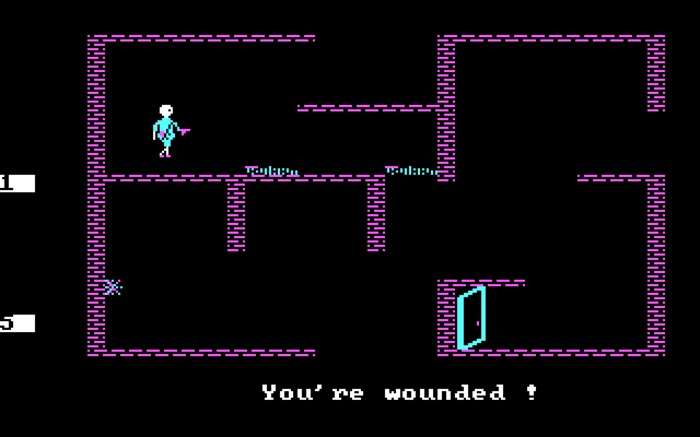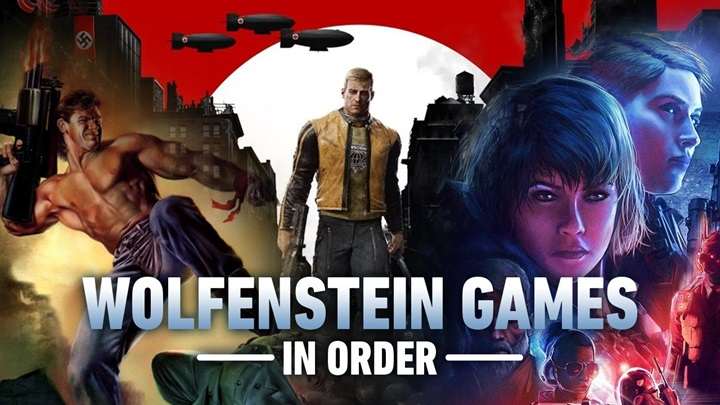The Wolfenstein franchise is a beloved name in the world of video games, particularly for its pioneering role in the first-person shooter (FPS) genre. Originating in the early 1980s, Wolfenstein has evolved into a cultural phenomenon, spanning multiple decades, platforms, and gaming experiences. Its captivating narrative, set largely in an alternate history where Nazis have gained unprecedented power, mixes historical elements with thrilling science fiction and horror.
In this article, we’ll explore the Wolfenstein games in order of release, detailing their gameplay, impact, and storylines, while charting the evolution of the franchise from its humble beginnings to modern gaming greatness.
Castle Wolfenstein (1981)
- Developer: Muse Software
- Platforms: Apple II, MS-DOS, Commodore 64, Atari 8-bit, others
The Wolfenstein journey began in 1981 with Castle Wolfenstein. Created by Silas Warner and Muse Software, this game wasn’t a first-person shooter but rather a 2D stealth-action game. In Castle Wolfenstein, you control an unnamed Allied spy trying to infiltrate the titular castle and steal secret Nazi plans.
- Gameplay: The top-down perspective allowed players to sneak through the castle, avoid or kill guards, and steal enemy uniforms to bypass security.
- Impact: It was innovative for its time, offering elements like stealth, disguises, and voice recordings that added to the atmosphere.
Beyond Castle Wolfenstein (1984)

- Developer: Muse Software
- Platforms: Apple II, MS-DOS, Commodore 64, Atari 8-bit
A sequel to the original, Beyond Castle Wolfenstein builds on the stealth mechanics of its predecessor. The game’s plot revolves around a mission to assassinate Adolf Hitler, with the player infiltrating a Nazi bunker to plant a bomb.
- Gameplay: Similar in structure to Castle Wolfenstein, Beyond introduced more challenging levels and an inventory system that allowed players to carry important items.
- Impact: While not revolutionary, it solidified the Wolfenstein formula of espionage, stealth, and Nazi opposition.
Wolfenstein 3D (1992)
- Developer: id Software
- Platforms: MS-DOS, SNES, Jaguar, Mac OS, others
Wolfenstein 3D is where the series took a dramatic leap and became the FPS legend it is today. Often credited as the grandfather of first-person shooters, Wolfenstein 3D introduced a completely new gameplay style, immersing players into a 3D world with fast-paced gunplay. You assume the role of B.J. Blazkowicz, a captured Allied spy who escapes from a Nazi prison to fight his way through the enemy lines.
- Gameplay: It was all about high-octane action, fighting Nazis, and navigating maze-like levels. Players collected keys, fought bosses, and discovered secret rooms.
- Impact: Wolfenstein 3D essentially created the FPS genre as we know it today, paving the way for other iconic games like Doom and Quake.
Spear of Destiny (1992)
- Developer: id Software
- Platforms: MS-DOS, Windows
Released shortly after Wolfenstein 3D, Spear of Destiny is a prequel to the main storyline. B.J. Blazkowicz is tasked with retrieving the Spear of Destiny, a powerful artifact held by the Nazis. The gameplay was essentially a continuation of Wolfenstein 3D, but with new levels and enemies.
- Gameplay: It kept the same engine and mechanics, focusing on tight, intense FPS combat with more challenging enemies and level designs.
- Impact: Though not as groundbreaking as Wolfenstein 3D, it expanded the story and gave fans more of the classic shooting action they loved.
Return to Castle Wolfenstein (2001)
- Developer: Gray Matter Interactive / Nerve Software
- Platforms: Windows, Mac OS, Xbox, PlayStation 2
After nearly a decade, Wolfenstein returned with Return to Castle Wolfenstein. The game modernized the franchise, introducing more complex graphics, improved AI, and a blend of both supernatural and military elements. Once again, B.J. Blazkowicz fights the Nazis, this time battling not only soldiers but also mutants and supernatural enemies like zombies.
- Gameplay: Return to Castle Wolfenstein offered a mix of traditional FPS shooting and stealth mechanics. The multiplayer mode became particularly popular, introducing a class-based system.
- Impact: This title helped reestablish Wolfenstein as a relevant franchise in modern gaming and inspired several multiplayer-focused spinoffs.
Wolfenstein: Enemy Territory (2003)
- Developer: Splash Damage
- Platforms: Windows, Linux, Mac OS
Originally planned as an expansion for Return to Castle Wolfenstein, Enemy Territory was eventually released as a standalone, free-to-play multiplayer game. It focused entirely on class-based, team-oriented gameplay, with players taking on different roles such as Soldier, Medic, or Engineer.
- Gameplay: With no single-player campaign, Enemy Territory was all about working together to complete objectives in large, map-based battles.
- Impact: The game became a cult classic in the online multiplayer scene, praised for its strategic depth and team-focused gameplay.
Wolfenstein (2009)
- Developer: Raven Software
- Platforms: Windows, PlayStation 3, Xbox 360
In 2009, Wolfenstein saw another reboot with a game simply titled Wolfenstein. This entry mixed traditional WWII elements with supernatural themes, with B.J. Blazkowicz taking on a secret Nazi group experimenting with occult powers. The game introduced a mystical energy called “The Veil,” which allowed players to access a hidden dimension for various abilities.
- Gameplay: The addition of “The Veil” powers gave players supernatural abilities, like slowing time or passing through walls, adding a new layer to the traditional FPS mechanics.
- Impact: Although the game was well-received, it didn’t achieve the same level of popularity as previous entries, largely due to stiff competition from other FPS franchises.
Wolfenstein: The New Order (2014)
- Developer: MachineGames
- Platforms: PlayStation 3, PlayStation 4, Xbox 360, Xbox One, Windows
This is the game that truly revived the Wolfenstein franchise for modern gamers. Set in an alternate timeline where the Nazis won World War II, The New Order sees an older B.J. Blazkowicz waking up from a coma in 1960 to find the world dominated by the Nazi regime. He joins a resistance movement to overthrow the oppressors.
- Gameplay: The New Order blended old-school FPS gameplay with modern elements, like a deeper narrative, emotional character arcs, and a more cinematic experience. The combat was fast-paced, and the level design allowed for both stealth and all-out action.
- Impact: The New Order was a critical and commercial success, praised for its storytelling, character development, and intense gameplay. It set a new standard for the franchise moving forward.
Wolfenstein: The Old Blood (2015)

- Developer: MachineGames
- Platforms: PlayStation 4, Xbox One, Windows
A standalone expansion to The New Order, The Old Blood is set in 1946, before the events of the main game. B.J. Blazkowicz infiltrates Castle Wolfenstein to obtain intelligence on a Nazi operation that could shift the course of the war.
- Gameplay: This entry leaned more heavily into horror and supernatural elements, with the second half of the game featuring Nazi zombies and other creatures. It retained the fast, fluid combat of The New Order but focused more on action than narrative depth.
- Impact: The Old Blood was a fun throwback to the earlier days of Wolfenstein, offering players a more straightforward action experience with a nostalgic nod to Wolfenstein 3D.
Wolfenstein II: The New Colossus (2017)
- Developer: MachineGames
- Platforms: PlayStation 4, Xbox One, Nintendo Switch, Windows
Wolfenstein II: The New Colossus continues the story from The New Order, with B.J. Blazkowicz leading the resistance in America against Nazi rule. The game takes players across various parts of a Nazi-occupied United States, from New York to New Orleans, as B.J. rallies the oppressed to rise against their conquerors.
- Gameplay: The New Colossus further refined the gameplay mechanics from The New Order, offering more customization, weapons, and choices in combat. It also doubled down on character-driven storytelling, giving depth to the personal struggles of the resistance fighters.
- Impact: Praised for its compelling narrative, strong characters, and high-energy action, The New Colossus solidified MachineGames as the rightful inheritors of the Wolfenstein legacy.


